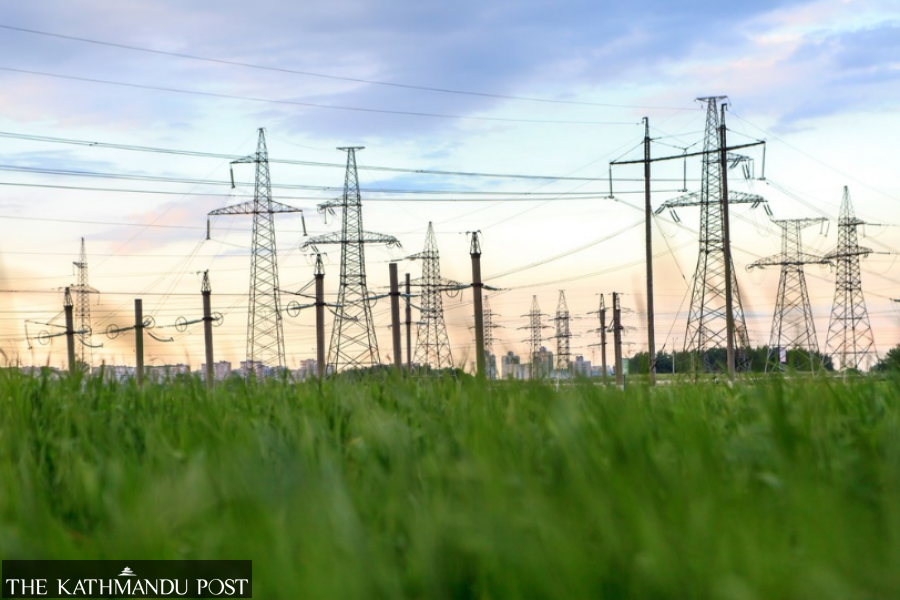National
With court ruling, Bharatpur-Bardaghat Transmission Project to build last 2 pylons
Officials say they would make administrative moves if residents reject offered compensation.
Prithvi Man Shrestha
The Nepal-India Electricity Transmission and Trade Project plans to erect the two remaining pylons for the 74-km Bharatpur-Bardaghat transmission line after winning a court battle against the locals of Dumkibas in Nawalparasi over a month ago.
The project’s work had remained halted since April last year after the Supreme Court, acting on a petition by locals of Dumkibas area, issued an interim order against the project. But on June 27 this year, a joint bench of Prakash Kumar Dhungana and Ishwar Prasad Khatiwada vacated the interim order paving the way for erecting the two remaining pylons.
The project recently wrote to the chief district officer of Nawalparasi to determine the compensation for land acquisition so that it can resume the work.
“We have written to the CDO of Nawalparasi (East) to determine the compensation to be paid to the owners of the land where the pylons will be erected,” said Shyam Kumar Yadav, chief of the Nepal-India Electricity Transmission and Trade Project under the NEA. “But as the full text of the Supreme Court order is yet to be received, the compensation fixation committee, which is headed by the chief district officer, has not been able to convene a meeting.”
As per the Land Acquisition Act 2077, the chief district officer heads the compensation fixation committee. The committee should determine the compensation based on the guidelines issued by the Nepal government from time to time. Since the land under the transmission line cannot be used for any other purposes than agriculture and the compensation offered by the government is generally less than the market value of land, locals do not want to provide land to transmission line projects.
Yadav said that the local government has not recommended the price for the land in the area in the absence of the full text of the Supreme Court.
The project has already erected 244 of the total 246 pylons of the transmission line. The two pylons span a distance of around five kilometres, according to Dirghayu Kumar Shrestha, chief of the Transmission Directorate at the NEA.
“It will not take more than a month to erect the remaining pylons. Once the land acquisition process is complete, we will get down to work and charge the transmission line with electricity from Bharatpur to Bardaghat,” said Yadav.
Soon after the June order from the Supreme Court, the NEA charged the completed sections of the transmission line.
According to the state-owned power utility, it charged electricity on a 56km section—from Aptari substation in Bharatpur to Arun Khola substation in Nawalparasi—of the 74km 220kV transmission line in June-end. From Arun Khola, power was transmitted on the old 132kv transmission line to Bardaghat.
Currently, there is a 132kV transmission line from Bharatpur to Bardaghat which can carry a maximum 80MW only, according to the NEA.
“With the construction of the 220kV transmission line, the NEA will be able to supply power to western parts of the country and this will help reduce power imports from India through the Tanakpur area,” NEA Managing Director Kul Man Ghising said, in the NEA press statement issued on June 30.
Officials at the NEA say that a low capacity transmission system across the country has been hindering large-scale transmission. Therefore, their priority has been to upgrade the existing transmission system.
Shrestha said that once the under-construction substation at Aptari, Bharatpur is ready, the transmission line can be charged to 220kV.
According to Yadav, it may take until December or January next year to complete the construction of the 220kV substation at Bharatpur. Even though the Supreme Court paved the way for the NEA to complete the remaining work of the transmission line, the question still remains whether the locals would accept the compensation offered by the government and allow the project to work.
“Now, our priority is to provide appropriate compensation to the landowners,” said Shrestha. “If the locals refused the compensation offered and continued obstruction then we may have to seek administrative measures to resume the work.”
Owing to local obstructions, the NEA had extended the project deadline several times.
“If all the obstructions are removed immediately, we can complete the Hetauda-Dhalkebar-Inaruwa Transmission Line by 2023,” said Yadav.
Officials and experts say that the prolonged court process has been one of the major obstacles to completing important development projects in the country for a long time.
“For any delay, the NEA has to pay fines to the contractors and additional interest on the loans to creditors. Also, the power produced by several hydropower projects goes to waste if the transmission line is not completed on time,” said former Energy Secretary Anup Upadhyay. “The court needs to understand the losses the nation suffers for the delay in issuing a verdict.”




 16.12°C Kathmandu
16.12°C Kathmandu















